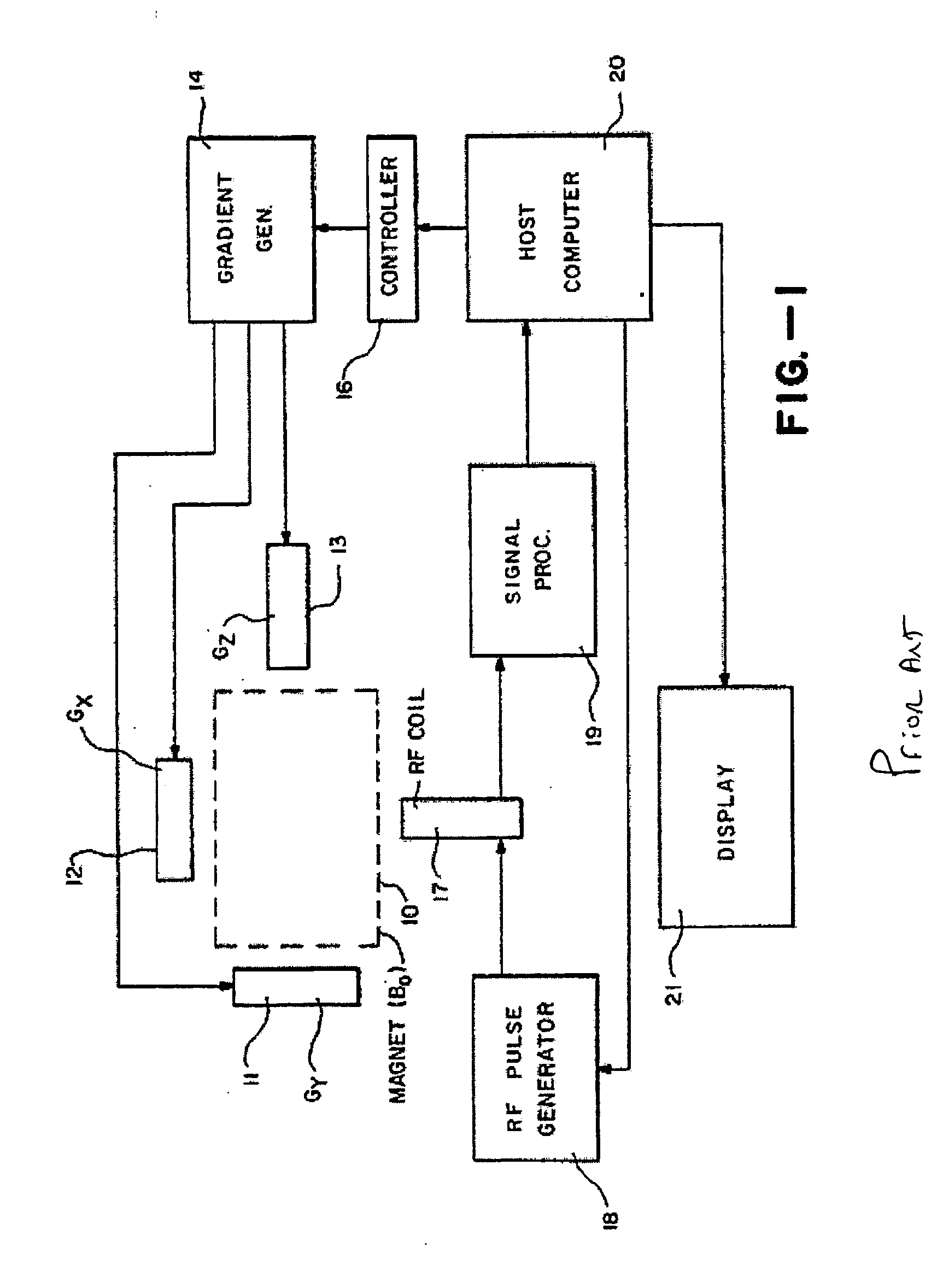Combined magnetic resonance data acquisition of multi-contrast images using variable acquisition parameters and k-space data sharing
a magnetic resonance and data acquisition technology, applied in the field of magnetic resonance imaging, can solve the problems patient visits, and reducing scan time, and achieve the effect of reducing scan tim
- Summary
- Abstract
- Description
- Claims
- Application Information
AI Technical Summary
Benefits of technology
Problems solved by technology
Method used
Image
Examples
Embodiment Construction
The techniques of the present invention may be used with standard MRI apparatus if parameters of the radio frequency (“RF”) pulse train and gradient may be controlled by, and feedback provided to, a host computer or other controlling mechanisms. For example, the system described above with reference to FIG. 1 provides such a suitable apparatus.
The techniques described below may be incorporated into such an MRI apparatus by way of programming the host computer 20 and / or controller 16 in order to select a control protocol, control the generation of desired waveforms from the RF pulse generator 18 and gradient generator 14, and measure signals that are induced in the subject being imaged. The software is generally written in any number of conventional programming languages and can be stored and transported on conventional computer readable media, such as magnetic storage disks (floppy diskettes, hard disks and the like), optical disks (CD-ROMS) and the like.
Referring to FIG. 2, an...
PUM
 Login to View More
Login to View More Abstract
Description
Claims
Application Information
 Login to View More
Login to View More - R&D
- Intellectual Property
- Life Sciences
- Materials
- Tech Scout
- Unparalleled Data Quality
- Higher Quality Content
- 60% Fewer Hallucinations
Browse by: Latest US Patents, China's latest patents, Technical Efficacy Thesaurus, Application Domain, Technology Topic, Popular Technical Reports.
© 2025 PatSnap. All rights reserved.Legal|Privacy policy|Modern Slavery Act Transparency Statement|Sitemap|About US| Contact US: help@patsnap.com



